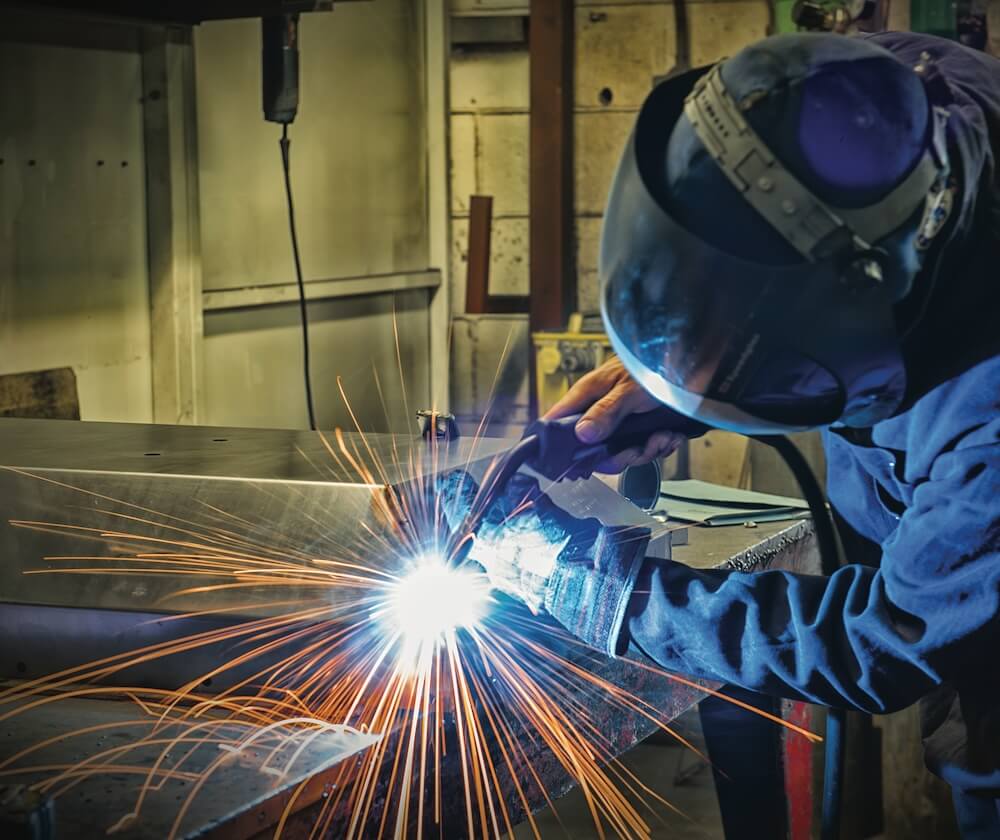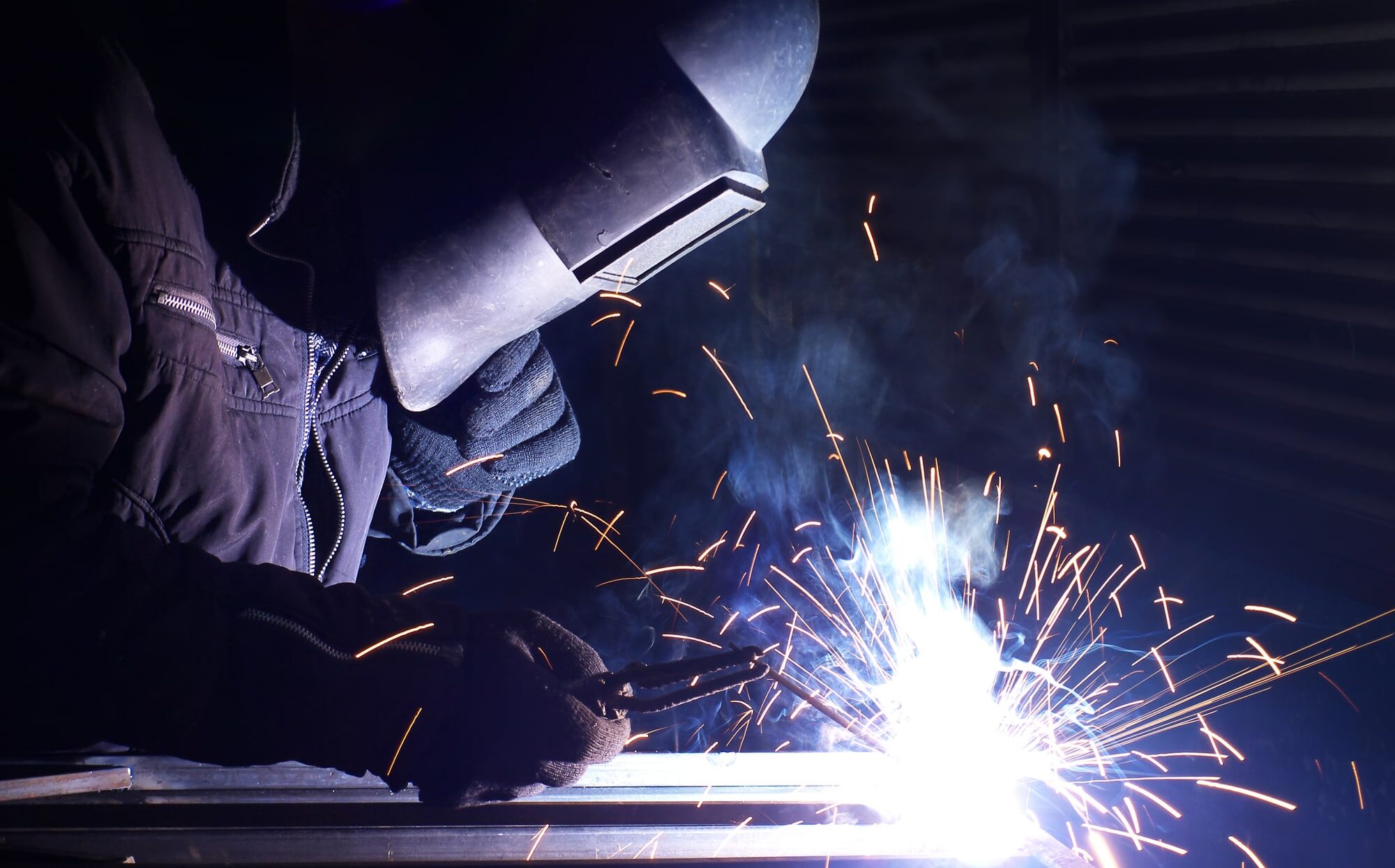All Regarding Welding: Key Insights Into Techniques and Ideal Practices for Success
Welding incorporates a range of strategies, each matched for details products and applications. Understanding these methods, such as GMAW, SMAW, and TIG, is important for achieving ideal outcomes. Moreover, the ideal equipment and security practices can not be overlooked. As prep work and troubleshooting play essential duties in the welding process, grasping these components can considerably enhance the top quality of the end product. What are the key variables that guarantee an effective weld?
Understanding Different Welding Strategies
Welding methods include a selection of methods, each fit to certain applications and products. Among the most common strategies are Gas Metal Arc Welding (GMAW), Shielded Metal Arc Welding (SMAW), and Tungsten Inert Gas Welding (TIG) GMAW, additionally called MIG welding, is preferred for its rate and versatility, making it perfect for slim products. SMAW, or stick welding, is favored for its simpleness and performance in outdoor settings, particularly with thicker metals. TIG welding uses accuracy and control, making it ideal for detailed job and non-ferrous metals (Montana Mobile Welding and Repair Belgrade Welding). Each method has its unique advantages and factors to consider, allowing welders to choose the ideal approach based upon the project's demands, material type, and preferred outcomes. Recognizing these strategies is essential for successful welding
Crucial Welding Devices and Tools
While various welding methods need specific abilities, the ideal devices and devices are similarly vital for attaining top quality results. Crucial welding devices includes welding makers, which vary relying on the strategy-- such as MIG, TIG, or stick welding. Safety gear, consisting of aprons, gloves, and safety helmets, assurances security and comfort throughout the process. On top of that, fixtures and clamps assist secure materials in position, ensuring precision in welds. Consumables like welding rods, wire, and protecting gas are additionally important components that influence the high quality of the weld. Tools such as mills and cutters assist in surface preparation and post-weld ending up, contributing to a specialist outcome. Spending in high-quality tools eventually improves the performance and efficiency of welding tasks.
Safety Practices in Welding
Correct security practices are vital in the welding industry to secure workers from potential dangers. Welders should put on ideal personal protective devices (PPE), consisting of safety helmets with proper shading, handwear covers, and flame-resistant clothing. Appropriate ventilation is vital to decrease direct exposure to unsafe fumes and gases generated during the welding procedure. Furthermore, employees ought to be educated in the proper handling of welding equipment to stop crashes. Fire precaution, such as maintaining flammable materials far from the welding area and having fire extinguishers conveniently offered, are needed. Regular assessments of tools and workspaces can assist determine potential risks before they result in mishaps. By sticking to these safety and security methods, welders can create a much safer working atmosphere and lessen dangers connected with their trade.
Readying Products for Welding
Preparing materials for welding is a crucial action that greatly influences the quality and integrity of the final product (Welding). Proper prep work entails cleaning up the surfaces to eliminate pollutants such as dirt, corrosion, and oil, which can endanger the weld. Strategies such as grinding, fining sand, or utilizing solvents are typically utilized to attain a clean surface area. Additionally, making sure that the products mesh well is vital; spaces can result in weak welds. It's likewise important to consider the placement and positioning of the components, as this will impact the convenience of welding and the last result. Finally, picking the ideal filler material and making sure compatibility with the base steels is essential for accomplishing strong, long lasting welds
Tips for Getting High-Quality Welds
Accomplishing high-quality welds needs focus to detail and adherence to finest methods throughout the welding process. Appropriate joint preparation is essential, ensuring surfaces are clean and cost-free from impurities. Selecting the proper filler product and welding technique based on the base metals is vital for suitable bonding. Keeping consistent traveling rate and angle while welding can promote and prevent defects uniformity. In addition, regulating warmth input is important; extreme heat can lead to warping and compromised joints. If essential, consistently checking the welds during the procedure permits for prompt changes. Ultimately, utilizing suitable post-weld therapies, such as cleansing and stress and anxiety relief, can enhance the sturdiness and stability of the weld, inevitably ensuring an effective result.
Repairing Typical Welding Issues
Welding typically offers difficulties that can impact the quality and integrity of the end product. Common concerns such as porosity, inconsistent weld grains, and overheating can arise, each needing details fixing techniques. Understanding these issues is necessary for welders to improve their abilities and his response achieve suitable outcomes.
Porosity Issues Clarified
Porosity can typically be ignored, it continues to be an essential issue in welding that can compromise the stability of an ended up product. Porosity describes the visibility of tiny gas pockets within the weld bead, which can deteriorate the joint and lead to premature failing. This trouble generally develops from pollutants, dampness, or inappropriate protecting gas insurance coverage throughout the welding procedure. To minimize porosity, welders ought to validate that the base products are completely dry and tidy, make use of suitable protecting gases, and maintain constant welding specifications. Regularly checking the equipment and environment can likewise assist recognize possible problems prior to they manifest in the weld. Attending to porosity successfully is essential for attaining solid, long lasting welds that fulfill top quality criteria.

Irregular Weld Beans
Inconsistent weld grains can greatly impact the top quality and stamina of a finished item. Different elements add to this issue, consisting of incorrect traveling speed, incorrect amperage setups, and inconsistent electrode angles. When the welder moves as well quickly, a grain may appear narrow and do not have infiltration, while relocating also gradually can create too much build-up. In addition, making use of the wrong amperage can result in either damaging or too much spatter, both of which concession weld integrity. The welder's strategy, such as irregular lantern activity, can also bring about uneven grain appearance. To reduce these troubles, welders need to focus on keeping constant, regulated activities and making certain proper tools settings to achieve harmony in their welds. Uniformity is essential to achieving solid and trusted welds.
Getting Too Hot and Warping Issues
Too much heat during the welding process can bring about considerable overheating and warping issues, impacting the structural stability of the workpiece. These issues often manifest as distortion, which can endanger placement continue reading this and fit-up, making additional assembly challenging. Elements adding to overheating consist of the choice of welding parameters, such as voltage and travel rate, along with the sort of material being bonded. To minimize these problems, welders must maintain regular traveling speed and proper heat input while keeping track of the work surface temperature level. In addition, pre-heating or post-weld warm treatment can help minimize tensions brought on by fast air conditioning - Montana Mobile Welding and Repair. Routine examination and adherence to finest practices are important in avoiding overheating and ensuring the durability and dependability of welded frameworks
Often Asked Concerns
What Are the Profession Opportunities in the Welding Sector?
The welding sector uses diverse occupation chances, including positions as welders, assessors, engineers, and instructors. Specialists can work in production, building, aerospace, and automotive sectors, taking advantage of helpful resources solid demand and affordable incomes in numerous functions.
Just How Can I Improve My Welding Rate Without Compromising Quality?
To boost welding speed without giving up top quality, one must practice effective methods, keep tools, optimize settings, and boost hand-eye coordination. Routine training and looking for feedback can also greatly add to achieving faster, high-quality welds.
What Qualifications Are Offered for Welders?
Many certifications exist for welders, including those from the American Welding Culture (AWS), the National Facility for Building Education and Research Study (NCCER), and different industry-specific organizations. These qualifications enhance employability and demonstrate ability effectiveness.
How Does Welding Impact the Qualities of Metals?
Welding influences the residential properties of steels by modifying their microstructure, which can lead to adjustments in hardness, ductility, and strength. Warm input and cooling rates throughout the procedure substantially impact these material attributes.
Can I Weld Dissimilar Metals With Each Other?

Comments on “What to learn about overheating prevention from Montana Mobile Welding and Repair”